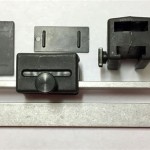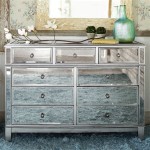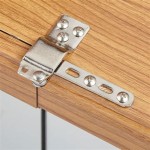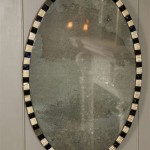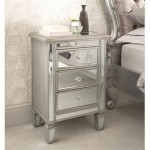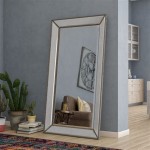Dressing Room Mirrors: A Comprehensive Guide
Dressing room mirrors are a ubiquitous yet often overlooked element of retail environments. Their primary function appears straightforward – to provide customers with a reflection of themselves while trying on clothing. However, the design, placement, and features of these mirrors significantly impact the shopping experience, influencing purchasing decisions and shaping perceptions of clothing fit and style. This article delves into the complexities of dressing room mirrors, exploring their various types, the psychological considerations behind their design, and their impact on the overall retail landscape.
The selection of a dressing room mirror is not a simple matter of choosing a reflective surface. Retailers must consider various factors, including the size of the dressing room, the lighting within the space, the target demographic, and the overall aesthetic of the store. Furthermore, the type of clothing being sold also plays a role, as certain items may necessitate specific mirror configurations to provide the most flattering and informative reflection.
The term “dressing room mirror” encompasses a broad range of designs. These can range from simple, frameless mirrors mounted directly on the wall to elaborate, free-standing units with integrated lighting and multiple viewing angles. The choice depends heavily on the brand identity and the desired customer experience.
Types of Dressing Room Mirrors
Several distinct types of dressing room mirrors cater to diverse needs and aesthetic preferences. Understanding these types is crucial for retailers seeking to optimize their fitting room spaces.
Wall-Mounted Mirrors: This is perhaps the most common type of dressing room mirror. Wall-mounted mirrors are typically affixed directly to the wall, saving valuable floor space. They can range in size from small, personal mirrors to large, full-length options. Frameless wall-mounted mirrors offer a clean, minimalist aesthetic, while framed mirrors can add a touch of elegance or reinforce the store's brand identity. The height at which the mirror is mounted is also crucial, ensuring that it accommodates a wide range of customer heights – a universal consideration in retail design.
Free-Standing Mirrors: Free-standing mirrors offer greater flexibility in terms of placement and viewing angle. They are often mounted on a rotating or tilting base, allowing customers to adjust the mirror to their liking. This type of mirror is particularly useful in larger dressing rooms or in stores that cater to customers who may require assistance while trying on clothing. Furthermore, free-standing mirrors can serve as a decorative element, enhancing the overall ambiance of the fitting room.
Three-Way Mirrors: Also known as triptych mirrors, these mirrors provide customers with a 360-degree view of their outfit. They typically consist of a central, full-length mirror flanked by two smaller, hinged mirrors that can be adjusted to provide different angles. Three-way mirrors are particularly popular in bridal shops and boutiques selling formal wear, as they allow customers to see the garment from all perspectives. However, they require more space and are generally more expensive than other types of dressing room mirrors. Attention must be paid to the hinge mechanisms and the overall stability of the structure to ensure longevity and customer safety.
Illuminated Mirrors: Mirrors with integrated lighting are designed to provide optimal visibility and reduce shadows, creating a more flattering reflection. The lighting can be incorporated in various ways, such as LED strips around the perimeter of the mirror or illuminated panels behind the glass. The color temperature of the lighting is also important, as warm lighting can create a more inviting atmosphere, while cool lighting can provide a more accurate representation of the clothing's color. Color Rendering Index (CRI) is a key performance indicator to ensure the artificial light source renders the true color of the items reflected. A high CRI is generally preferred in retail settings.
Smart Mirrors: Advancements in technology have led to the development of smart mirrors, which incorporate features such as virtual try-on capabilities, product recommendations, and social media integration. These mirrors can enhance the shopping experience by providing customers with additional information and allowing them to share their outfits with friends before making a purchase. However, the cost of smart mirrors can be significant, and retailers must carefully consider whether the benefits justify the investment. Considerations regarding data privacy and cybersecurity also need careful evaluation when deploying smart mirror technology.
Psychological Considerations in Mirror Design
The design of a dressing room mirror is not solely about functionality; it also involves understanding the psychological impact of the reflection on the customer. Retailers often employ specific techniques to create a more flattering and positive experience, influencing purchasing decisions through subtle manipulations of perception.
Mirror Placement and Angle: The angle at which the mirror is placed can significantly affect how the customer perceives their body. A slightly tilted mirror can create the illusion of a taller and slimmer figure. Similarly, the height of the mirror should be adjusted to ensure that the customer's face is positioned at the most flattering angle. Retailers often experiment with different angles to find the optimal configuration for their target demographic. For example, a store catering to younger customers might prioritize a more youthful and energetic appearance, while a store targeting older customers might focus on creating a more sophisticated and elegant image. Careful consideration of the psychological impact of the mirror's angle ensures the positive reinforcement of a customer’s feelings when trying on clothes.
Lighting and Color Temperature: As mentioned earlier, lighting plays a crucial role in shaping the perception of the reflection. Warm lighting can create a more inviting and flattering atmosphere, but it can also distort the true colors of the clothing. Cool lighting, on the other hand, provides a more accurate representation of the color, but it can also be less forgiving of imperfections. The ideal lighting scheme involves a balance between warmth and accuracy, creating a flattering yet realistic reflection. Additionally, the use of diffused lighting can help to minimize shadows and create a more even and flattering tone. A well-lit environment contributes to customer confidence and encourages positive purchase decisions.
Mirror Size and Shape: The size of the mirror can also affect the customer's perception of their body. A larger mirror provides a more complete view of the outfit, but it can also be intimidating for some customers. A smaller mirror, on the other hand, can be less overwhelming, but it might not provide a sufficient view of the entire outfit. The shape of the mirror can also influence the overall aesthetic of the dressing room. Rectangular mirrors are generally considered classic and versatile, while oval or round mirrors can add a touch of elegance or femininity. The dimensions need to allow the customer to observe the garment without feeling overwhelmed or limited by the mirror's perspective.
Cleanliness and Maintenance: A dirty or scratched mirror can create a negative impression and detract from the overall shopping experience. Regular cleaning and maintenance are essential to ensure that the mirrors are always in optimal condition. Streaks, fingerprints, and other blemishes can distort the reflection and make it difficult for customers to accurately assess the fit and style of the clothing. Retailers should implement a regular cleaning schedule and ensure that staff are trained to identify and address any issues with the mirrors. This attention to detail demonstrates a commitment to customer satisfaction and reinforces the brand's image of quality and care. The reflective surface should be inspected regularly for any defects that may compromise the customer’s experience.
Impact on the Retail Landscape
Dressing room mirrors are not merely functional objects; they are integral components of the retail experience, influencing customer behavior and shaping the overall perception of the brand. Their impact extends beyond the immediate act of trying on clothing, affecting purchasing decisions, brand loyalty, and even the retailer's competitive advantage.
Influencing Purchasing Decisions: The reflection in the dressing room mirror is often the deciding factor in whether or not a customer chooses to purchase an item. A flattering reflection can boost confidence and encourage the customer to make the purchase, while an unflattering reflection can lead to disappointment and abandonment. Retailers understand this dynamic and invest heavily in creating fitting room environments that enhance the customer's perception of themselves and the clothing. The mirror acts as a visual confirmation of the customer’s desired image or style, reinforcing a positive emotional connection with the garment.
Enhancing Brand Loyalty: A positive and memorable fitting room experience can contribute to increased brand loyalty. When customers feel comfortable and confident in the dressing room, they are more likely to associate those positive feelings with the brand as a whole. This can lead to repeat purchases and positive word-of-mouth referrals. Retailers that prioritize the fitting room experience are more likely to cultivate a loyal customer base. A well-designed and maintained dressing room signifies that the retailer values the customer's experience and is committed to providing a high-quality shopping environment. This reinforces a sense of trust and strengthens the relationship between the customer and the brand.
Gaining a Competitive Advantage: In a highly competitive retail market, the fitting room can be a key differentiator. Retailers that offer exceptional fitting room experiences can attract and retain customers who are seeking a more personalized and comfortable shopping environment. This can translate into increased sales and market share. By investing in high-quality mirrors, thoughtful lighting, and attentive service, retailers can create a competitive advantage that sets them apart from the competition. A superior fitting room experience demonstrates a commitment to customer satisfaction and positions the brand as a leader in the industry. Innovations in mirror technology, such as smart mirrors, can further enhance the competitive edge by offering unique and engaging features.
The future of dressing room mirrors is likely to involve further integration of technology and a greater emphasis on personalization. Smart mirrors will continue to evolve, offering increasingly sophisticated features such as virtual stylists, personalized recommendations, and augmented reality try-on experiences. Retailers will also explore new ways to customize the fitting room environment to suit the individual needs and preferences of each customer, creating a truly bespoke shopping experience. The dressing room mirror, once a simple reflective surface, will become an even more powerful tool for influencing customer behavior and shaping the future of retail.

Unique Scenescetter Lighted Dressing Room Mirrors Mirror Designs Wall Table

Buy Best Dressing Table Mirrors Glazonoid

See More Of Fran Hickman Design Interiors S Moda Operandi Belgravia On 1stdibs Dressing Room Mirror Boutique Interior

Mirror Lights Cole Lighting

What Are The Best Type Of Mirrors For A Dressing Room Hollywood

Wall Mounted Cool White Dressing Room Led Mirrors

Buy Best Dressing Table Mirrors Glazonoid

Dressing Room Mirror Closet

Large Hollywood Light Up Mirror Dressing Table Vanity Make With Lights

Big Wall Led Dressing Room Mirror Smart Full Length China Light Made In Com

